APS Spotlight
2021 APS Janet Taylor Spence Awards

Every year since 2010, the APS Janet Taylor Spence Award for Transformative Early Career Contributions has honored the most creative and promising researchers who embody the future of psychological science. The award, named for APS’s first elected president, recognizes seven psychological scientists in 2021 for their innovative research impacting areas ranging from understanding the mechanisms that can contribute to antisocial behavior to facilitating greater access to evidence-based psychological interventions for common conditions such as depression and anxiety.
The Observer asked recipients to share their proudest achievements and ongoing research. Learn more about the Spence Awards, and see past recipients.
Listen to a conversation with several 2021 Spence recipients on APS’s Under the Cortex podcast.
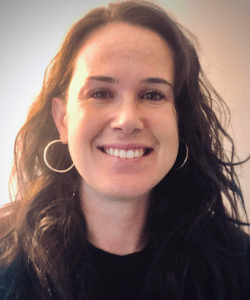
Arielle Baskin-Sommers
My work focuses on identifying and specifying the cognitive, emotional, and environmental mechanisms that contribute to antisocial behavior (e.g., substance use, criminal activity, aggression). I examine these mechanisms in a wide variety of individuals, including those who suffer from substance use disorders, psychopathy, antisocial personality disorder, and those who chronically engage in risky behavior. A guiding principle of my research is that focusing on the behavior alone may be misleading, and that understanding the underlying mechanisms associated with specific behavioral expressions is needed to precisely conceptualize and intervene in antisocial behavior. I use that principle and multiple methods (questionnaires, life-history and clinical interviews, government records, behavioral tasks, electrophysiology, and neuroimaging) to develop novel experimental tasks, assessments, and intervention strategies that consider these differences across individuals. This approach has powerful implications for justice system-involved individuals as current assessments and interventions take a more or less one-size-fits-all approach. Instead, my work shows the importance of distinguishing and targeting the mechanisms that are associated with specific forms of antisocial psychopathology and behavior.
What was the seminal event, or series of events, that led you to an interest in your award-winning research?
If I were to trace the early roots of my interest in psychological science, I would have to say that it emerges from childhood and adolescent experiences. For as long as I can remember, I spent part of the year traveling across the world and being exposed to different people and their ways of understanding and organizing life. I lived among the indigenous people of Oaxaca, Mexico; explored archaeological sites throughout South America with local physical anthropologists; toured Europe for two summers as part of a U.S. national basketball team and exchanged cultural perspectives with youth from all over the globe; and studied Spanish among the very wealthy in Marbella, Spain. During each of these and other travels, I developed a true fascination with humankind and a desire to understand and help alleviate some of their miseries. My interest in antisocial behavior was developed by some experiences closer to “home.” I spent my early formative years growing up in Brooklyn, New York. Here, I learned to traverse varied terrains and enjoyed the treasures of multiculturalism. At the same time, I was also exposed to the other side of Brooklyn life where the miseries of crack addiction were visible everywhere; where I witnessed severe and frequent incidents of interpersonal violence; and where I developed a strong sense of fellowship with those ravaged by the turmoil of inner-city life. These experiences and those from my travels provided me with many lenses through which to observe human behavior.
The core of my program of research started in graduate school, maybe even on the first day I stepped foot inside the prison to conduct a life history interview. As I sat across from a man who was incarcerated for murder, I remember thinking about how some of our early life experiences and beliefs were quite similar yet led us to take very different paths. So many questions were swirling around in my head—thinking about ways to quantify the similarities and differences I was noticing between this man and myself—when I was jolted back to the moment by an announcement over the speaker system not to eat the oranges because someone stored “shanks” in them. From that day on, I was deeply committed to applying psychological science to better understand the mechanisms contributing to severe antisocial behavior (and learned to never take the oranges from the cafeteria!).
Tell us about one of the accomplishments you are most proud of within this area of research. What factors led to your success?
My proudest accomplishments are being able to educate the public about scientific advancements in understanding antisocial behavior and to counter myths that are commonly mentioned in legal settings and in the media. To that end, I have been fortunate to give talks to senior judges in the United Kingdom about bringing a more humane, and scientifically accurate, understanding of psychopathy to the legal system. I have been able to collaborate with the Connecticut Department of Correction and build a lab inside their prisons (the first ever in Connecticut) to conduct research that has informed policies and practices. Finally, my work has been cited in several court cases to highlight the impact of psychobiological mechanisms on how individuals navigate their world and their effects on criminal behavior. I am honored that so many people in our studies have trusted me and my students with their stories and that we are in a position to use that information to help change the way people with antisocial psychopathology interact with the world and are viewed by others.
What contributions, or contributors, to psychological science do you feel have had a major impact on your career path?
As an undergraduate at Brown University, I was fortunate enough to work with Drs. Tara White and Amanda Graham. Tara’s neuroimaging research on amphetamines and Amanda’s smoking intervention research sparked my interest in using basic science to inform intervention. Most importantly, though, working with these two brilliant and powerful women showed me early on the impact mentors can have on your intellectual and personal development.
My two graduate school advisors, Drs. Joseph (Joe) Newman and John Curtin, continued to underscore for me the crucial significance of strong mentorship. Without Joe, I would not be studying psychopathy. His work highlighted the importance of combining theory and rigorous methods—and the beauty of how ideas can be generated whether you are sitting in an office or on a porch with a glass of wine. Another amazing quality of Joe’s was his willingness to connect with various collaborators, specifically and most critically, with John. John helped me develop my analytic and psychophysiological skills (and taught me to skate ski!). John’s methodological expertise was remarkable, his enthusiasm for research, contagious, and his willingness to jump on a quick call to help out was so appreciated.
Since graduate school, I have been honored to learn from and collaborate with several scientists. Dr. Essi Viding has been especially influential in my professional development. She has modeled for me the importance of conducting rigorous psychological science and communicating that science in forums open to the public and to people outside of the field. Additionally, my colleagues at Yale University have provided amazing professional and personal support. My interactions with Dr. Alan Kazdin will forever influence how I think about psychological science. Alan’s wit, good humor, and research on interventions for conduct disorder have shown me that great scientists are precise in their thinking but never take themselves too seriously! I also am extremely grateful for my colleagues BJ Casey, Jutta Joormann, Tracey Meares, Jennifer Richeson, and Laurie Santos. These women are thoughtful, generous, and rigorous scientists. Each has pushed me to incorporate multiple perspectives into my research. Each has helped me navigate different professional spaces. And, each has demonstrated the importance of bringing some humanity and humility to science. Finally, I would like to express my gratitude to several peers who I have been lucky enough to collaborate with: Luke Hyde, Naomi Sadeh, Joshua Buckholtz, and Inti Brazil. These colleagues are a great source of support and are amazing scholars.
I am forever grateful to these people. I hope that every scientist is lucky enough to have such amazing mentors and colleagues support them in their career.
What questions do you hope to tackle in the future?
A growing area in my research program is a focus on the environmental factors (e.g., exposure to community violence, concentrated disadvantage) that contribute to antisocial behavior. These environmental factors are associated with adverse outcomes, often leading to interventions that focus on the environment or community at large. However, this approach is partial in that it cannot explain why only some individuals are negatively affected by these environmental factors. The next steps in my research seek to examine cognitive-affective mechanisms that shape how people engage with their environments such that they lead to antisocial behavior. Ultimately, I seek to develop a multidisciplinary model of equifinal pathways to antisocial behavior rooted in a systematic understanding of cognitive-affective mechanisms. In this way, basic research can be translated into more effective, targeted interventions that can remediate antisocial behavior.
What does winning this award mean to you both personally and professionally?
It is truly an amazing honor to be given this award. Of course, I am thrilled to be recognized; but for me, receiving this award is a way to acknowledge all of my mentors, colleagues, and students who have helped me on my professional journey. This recognition also reinforces for me the importance of continuing to bring a scientific approach to understanding and intervening in antisocial behavior.
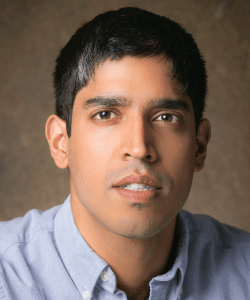
Sudeep Bhatia
I use behavioral experiments, large-scale digital data, and computational modeling to study how people think and decide. My aim is to build computational cognitive models that can deliberate over and respond to a large variety of everyday decision problems in a human-like manner.
What was the seminal event, or series of events, that led you to an interest in your award-winning research?
As a teenager, I was concerned with philosophical questions about choice, meaning, and morality. Eventually I learnt that I was better suited to experimental and computational (rather than philosophical) work on these questions, and I gravitated towards research on the psychology of decision making.
Tell us about one of the accomplishments you are most proud of within this area of research. What factors led to your success?
I published a sole-authored Psychological Review paper as a fourth year PhD student. Until then I had received little feedback on my work. Although my PhD advisors were supportive of my independent path, there was no one in my department with interest or expertise in cognitive psychology. Having my work accepted in a journal like Psychological Review was extremely validating and gave me confidence in my abilities and goals.
What contributions, or contributors, to psychological science do you feel have had a major impact on your career path?
I was exposed to two important papers early on in my career. The first was a paper on the cognitive modeling of decision making by Jerome Busemeyer and colleagues. The second was a paper on how text data can be used to extract semantic representations, by Thomas Landauer and colleagues. These papers gave me new theoretical and methodological tools with which to think about human cognition and behavior. Much of my research over the past 10 years has tried to build upon (and integrate) the ideas put forward by these papers.
What questions do you hope to tackle in the future?
I am especially interested in modeling high-level cognition, particularly reasoning and problem solving. There is a rich empirical literature on this topic in psychology, but until now most theories have been qualitative. I would like to develop computational cognitive process models of high-level cognition that can quantitatively predict naturalistic high-level cognition and explain how complex reasoning emerges from simple memory and decision-making mechanisms.
What does winning this award mean to you both personally and professionally?
I feel extremely honored by the recognition.
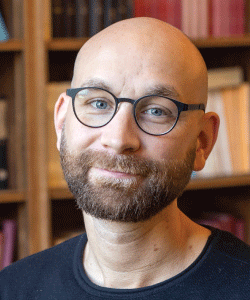
Eiko Fried
The four big questions I have been thinking about in the last decade are how to best understand, measure, model, and classify mental health problems. My research conceptualizes mental health or illness as emergent properties that arise from complex, dynamical, biopsychosocial systems, rather than as clear-cut categories with simple causes. I hope that understanding these emergent properties as systems will provide ways forward for all four of my research interests.
What was the seminal event, or series of events, that led you to an interest in your award-winning research?
I focused my dissertation research on problems of depression as a diagnostic category, and the importance of moving beyond this simplified dichotomy of healthy vs depressed. Three events in 2013 encouraged me to keep working on this topic. First, the DSM-5 field trials were published, and depression came out with an inter-rater reliability of only 0.28, one of the lowest of all studied diagnoses. Second, NIMH director Thomas Insel published a blog post entitled “Transforming Diagnoses” stating that NIMH will be “re-orienting its research away from DSM categories,” primarily due to a lack of validity. And third, I encountered a prescient body of work from over a century ago criticizing the, as Alfred Hoche wrote in 1912, “frenetic if fruitless activity” of searching for psychiatric disease categories based on the “unassailable belief that even in the field of psychiatry it must be possible to discover clearly defined, pure and uniform forms of illness.” I was inspired by the idea of mental disorders as complex properties with fuzzy boundaries, and it energized me towards my current research.
Tell us about one of the accomplishments you are most proud of within this area of research. What factors led to your success?
The work we did in the last years led to the funding of a 5-year project by the European Research Council I am really proud of: building a personalized early warning system for predicting depression in young adults. I am currently hiring my team, and in a few months, we will start collecting ecological momentary assessment as well as digital phenotype data in 2,000 students via wearables, and will use complex systems theory and statistical network models to try to forecast transitions into depression before they occur. If successful, this project could have a significant impact on our ability to develop and implement more effective personalized prevention programs.
One factor that helped me obtain this grant was the diversity of my working environments. I have had the privilege of living in 6 countries in the last years, and while my PhD was in clinical psychology, I spent 4 years working in methodology departments. This has helped me to work in international and interdisciplinary teams. In the last 2 years, for example, I worked with Jessica Flake on questionable measurement practices; with Donald Robinaugh on formalized theories of mental disorders; with Astrid Chevance on involving patients and caregivers in depression research; with Teague Henry on controlling dynamical systems; and with Sacha Epskamp on statistical tutorials papers. Learning from and with my collaborators enabled me to submit a competitive grant proposal to the European Research Council, and I want to thank them for their inspiration and support.
What contributions, or contributors, to psychological science do you feel have had a major impact on your career path?
My diverse working environments came with a number of fantastic formal and informal mentors along the road; the most important ones have been Katja Liebal (primatology), Randolph Nesse (medicine), Francis Tuerlinckx (statistics), Denny Borsboom (psychometrics), and Kenneth Kendler (psychiatry), who helped me become a better researcher and also a better mentor to my own students.
Additionally, research conferences have introduced me to many brilliant colleagues, collaborators, and friends; facilitated numerous new ideas and collaborations; and led to many memorable experiences. One example for such a conference is APS, of course: I have attended all in-person meetings since 2014, and I would not be where I am today without these conferences. They were formative for my career, helping me to close the gap between the European and American research cultures. Another example is SIPS, the Society for the Improvement of Psychological Sciences. It’s a young community of like-minded researchers who have identified similar problems (including transparency, reproducibility, and replicability), have similar goals, and have a track record of coming up with groundbreaking team initiatives such as the psychological science accelerator. The action-oriented SIPS conferences gave me energy to (and knowledge how to) further improve my own open science practices. One particular feature of SIPS I enjoyed were collaborative hackathon sessions, a format we introduced to APS in 2019.
What questions do you hope to tackle in the future?
We have been telling ourselves somewhat oversimplified stories in mental health research for too long. While it’s widely accepted today that mental disorders are comorbid and heterogeneous, and feature both multifinality (i.e., the same set of causal agents can lead to different mental health outcomes) and equifinality (i.e., diverse causes can produce the same disorder), we still ask questions such as ‘what is the main cause for depression’ and ‘what are the genes for obsessive compulsive disorder.’ A more promising question to me seems: What are the biopsychosocial elements that lead to and sustain mental illness, and how do these elements interact to produce the emergent phenomena? I believe that embracing complexity rather than reifying simple stories will facilitate a deeper understanding of mental disorders and ultimately lead to improved efficacy of prevention and intervention. I am convinced that such sophistication needs to happen both at the theoretical level, e.g., via formalized theories, as well as at the statistical level, e.g., via dynamical systems models.
What does winning this award mean to you both personally and professionally?
The award is a huge honor. It reflects, in part, the hard work and long hours I’ve put into research. It reflects the support by Leiden University and other universities I worked at previously. But it primarily reflects the contributions of the amazing mentors and colleagues I got to work with in the last decade. These contributions have helped me to grow into the role of a generalist who can form bridges between specialists to leverage their knowledge. This has resulted in research that none of us could have done alone: Science is not only more fun as a team sport, but also better.
In this regard, like in many others, Janet Taylor Spence was a pioneer. She is not only famous for the quality of her groundbreaking work, but also for her service to the field across a range of disciplines, including clinical psychology, personality psychology, measurement, and gender research. It is an enormous honor to receive an award devoted to her memory.
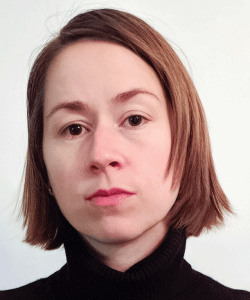
Celeste Kidd
University of California, Berkeley
My lab studies the formation of beliefs, starting in infancy and continuing through adulthood. We are especially interested in why two people’s responses to the same evidence can differ, and why people sometimes continue to believe things even when presented with evidence that you’d expect should cause them to revise.
What was the seminal event, or series of events, that led you to an interest in your award-winning research?
Like most people, I’ve had ample opportunity in my life to observe that people sometimes believe things despite contradictory evidence. I studied to be an investigative reporter before I found science, and sometimes the person whose views misaligned with mine were those of my editor. It took me a while to understand that human beliefs don’t just come from evidence, they shape the process of sampling the evidence. So if someone you are talking to is very sure already on a point, it’s going to be difficult and maybe impossible to change their heart and mind, no matter what you put in front of them.
The more you study human cognition, the more you appreciate the fact that we do not have direct access to truth about the world. The world is a big, rich, complex place, with more information in it than any one person could possibly ever hope to learn from. So people are forced to pick and choose. Different people take different paths in life, and they have different options presented to them by nature of those different paths, and they make different choices. Each one of them is doing their best to understand parts of the world using fairly crude, imperfect cognitive mechanisms.
I hope I’ve become more intellectually humble over the years as a result of our research. I know not to trust how certain I feel, and I hope that makes me better able to update as new information comes in.
My lab has also obviously taken a lot of inspiration from the past few years, as political forces intentionally disseminated disinformation for self-interested reasons. Why did people conclude the U.S. presidential election was stolen? And is the process they used to reach that conclusion really fundamentally different from those who concluded it was not? I don’t think so.
Tell us about one of the accomplishments you are most proud of within this area of research. What factors led to your success?
I’m always most excited about what is coming up and what is new. I’m very excited about ongoing work by lab members like Louis Martí, Evan Orticio, and Sarah Stolp about heuristics people employ in forming beliefs. Louis’ work has shown that people form beliefs on the basis of a surprisingly sparse amount of feedback, and once a belief is established with high confidence, people resist revision. He’s now leading working on understanding exactly how much variance there is in people’s concepts and beliefs, and what the source of the variation is. Evan Orticio is investigating social factors that influence belief adoption. And Sarah has complementary work in progress about the impact of modern technologies for sharing information on human beliefs. She also has a cool line of research planned around building computational models to understand attentional allocation and learning as a rational resource-limited process.
What contributions, or contributors, to psychological science do you feel have had a major impact on your career path?
There are too many to list. Amos Tverskey and Daniel Kahnemann’s “Judgment under Uncertainty: Heuristics and Biases” paper in Science is a classic paper that encouraged me down my current research path. Richard Aslin, who was my graduate school advisor, has also been a major source of inspiration, especially his work on infant statistical learning and attention. His Developmental Science paper “What’s in a look?” was especially inspiring, and got me started thinking about how you could quantitatively measure the influence of informational utility or value on attention. I was also highly inspired by Jenny Saffran’s work with Richard Aslin and Elissa Newport on infant statistical learning (Science, 1996).
My work and my career has also been strongly influenced by my closest collaborators, especially Steve Piantadosi, whose approach to understanding learning as program induction I admire. I also admire the philosophical depth and intellectual bravery of Alison Gopnik, with whom I’m working on understanding the development of curiosity over the lifespan and also developing child-inspired AI on a DARPA-funded initiative. I also owe a deep debt of gratitude to Jessica Cantlon, Ben Hayden, Brad Mahon, Sarah Heilbronner, Keturah Bixby, Elissa Newport, and Richard Aslin, who not only inspired me with their research, but also directly put their careers at risk in the interest of supporting mine and those of more than a dozen other women at the University of Rochester when the university failed to respond appropriately to harassment by one of its professors. I’m also incredibly thankful to Ann Olivarius, Jef McAllister, Kelsey Murrell, Mollie Johnson, and their ongoing work towards equality for women in academia.
What questions do you hope to tackle in the future?
The big one: How can we give people better access to truth in the world? And, relatedly, how can we build technologies that help humans transcend the biases in their belief formation processes, rather than exploit or reinforce them?
What does winning this award mean to you both personally and professionally?
It’s a great honor to receive this award. I appreciate the efforts that APS makes to support early career scientists.
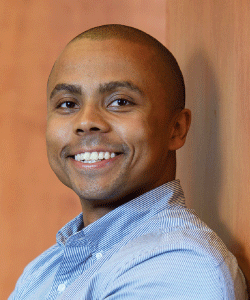
Steven Roberts
Broadly, I am interested in identifying and dismantling the cognitive, developmental, and social bases of racism. Specifically, I am interested in 1) the tendency to interpret how a group is as how group members should be, 2) how concepts of race vary across development and social groups, and 3) how such tendencies and concepts maintain and reinforce systemic racism in the real world (e.g., in the Christian church, psychological science).
What was the seminal event, or series of events, that led you to an interest in your award-winning research?
Someone very important to me lost their life because of the color of their skin. That event shaped my interests before I even know what my interests were.
Tell us about one of the accomplishments you are most proud of within this area of research. What factors led to your success?
I am most proud of a review paper that integrated classic and contemporary research from the social sciences and humanities to provide a conceptual overview of the psychological basis of racism (Roberts & Rizzo, 2020). The paper is important to me because it put together scholarship from seemingly disconnected disciplines (e.g., cognitive psychology, legal studies, critical race theory) to make clear the vast amount of knowledge that had been accumulated on the topic. In doing so, I hope to have given others (and myself) a concrete map of a concrete problem and how to solve that problem. I am particularly indebted to Michael T. Rizzo, a friend and collaborator, as this paper would not have been possible without him.
What contributions, or contributors, to psychological science do you feel have had a major impact on your career path?
Susan Gelman was my primary advisor at Michigan, and I owe my career path to her. I joined her lab during my first year as a PhD student at the University of Michigan, with a broad interest in race and essentialism and no experience in experimental design. Yet as a consequence of her brilliance, kindness, and mentorship, I was introduced to a world that I fell in love with and that has allowed me to lead a life that nourishes and heals my soul.
As an undergraduate at NYU, Rose Vukovic and Gigliana Melzi instilled in me a readiness to learn and work hard. As a graduate student at Michigan, Arnold Ho taught me about social dominance orientation and how to work on important social problems. Enrique Neblett Jr., and the broader Michigan Mafia, taught me about the importance of conducting research with and for people, and not simply about them. Henry Wellman welcomed me to cognitive psychology and strengthened my belief about beliefs. At Stanford, Jennifer Eberhardt gave me the community necessary to survive in psychological science.
What questions do you hope to tackle in the future?
I am very interested in the role of social norms in motivating children and organizations toward anti-racism.
What does winning this award mean to you both personally and professionally?
To be honest, when I received the email stating that I won this award, I was confused. I was even more confused when I looked at the list of past winners. So, assuming that someone didn’t make a mistake, I take this award to mean that Janet Spence would approve of my research program and that I am on the path that I think I should be on.
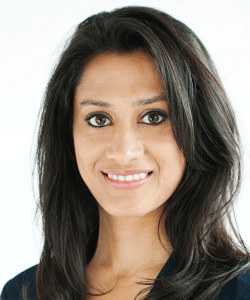
Daisy Singla
I am interested in scaling up evidence-based psychological interventions for common conditions such as depression and anxiety. We have a good idea of what works, but there will never be enough specialists to address the treatment gap. So, my research interests involve developing and testing solutions—including training non-specialist providers, or individuals with no formal training or experience, to deliver evidence-based interventions. As a clinician scientist, I believe it is our scientific responsibility to facilitate access to these treatments.
What was the seminal event, or series of events, that led you to an interest in your award-winning research?
Rather than events, I would like to highlight specific individuals. First and foremost, I am inspired by my parents, who immigrated to Canada from India in the 70s and weathered the many challenges that immigrants encounter including systematic racism. My parents’ resilience galvanized my interest to explore why people and societies respond to situations in the ways that they do. Importantly, their love and tireless work ethic continue to inspire me. Second, I have had the good fortune of being mentored by leaders in our field including professors Frances Aboud, Steve Hollon, Cindy-Lee Dennis, and Vikram Patel. Their support has been unflappable during pivotal moments of my career and they continue to guide me with honesty, warmth and wisdom. Finally, there are so many colleagues and team members who inspire me because of their dedication to patient-centered care. These relationships have formed my foundation to pursue innovative ideas.
Tell us about one of the accomplishments you are most proud of within this area of research. What factors led to your success?
One of the recent accomplishments that I am most proud of is launching our SUMMIT trial and sustaining the trial during the pandemic. Scaling Up Maternal Mental healthcare by Increasing access to Treatment or SUMMIT (www.thesummittrial.com) is a large, multi-center, non-inferiority trial that asks key questions related to scaling up psychological treatments in Canada and the USA. Funded by Patient Centered Outcome Research Institute (PCORI), SUMMIT is the largest psychotherapy trial for perinatal populations to date. Because the trial is embedded in real-world contexts, we will be able to answer important questions related to ‘who’ and ‘how’ psychological interventions can be delivered.
Factors contributing to this success include my brilliant study team along with a decade of experience in low- and middle-income country contexts. The latter fostered a pragmatic, person-centered perspective that no experience in the West could replace.
What contributions, or contributors, to psychological science do you feel have had a major impact on your career path?
Two major contributions to psychological science have impacted my career.
The first is the incontestable evidence-based demonstrating the efficacy of psychological interventions for depression and anxiety. The past 40 years has demonstrated what works (and what doesn’t work). I believe my generation can build on the lessons learned to implement scalable solutions to improve access to these effective interventions.
The second is the field of global mental health (GMH). The driving idea behind GMH is achieving equity in mental health for all people worldwide, and it therefore tests innovative, cost-effective strategies to improve access to quality care. While GMH is typically used in low- and middle-income countries, it presents a new way of thinking that requires urgent attention in high-income countries. For example, in SUMMIT, we now have the opportunity to reverse-engineer some of the very innovative and effective delivery strategies from the Global South to the Global North.
What questions do you hope to tackle in the future?
Beyond who provides treatment and how it can be delivered, I hope to address other bottlenecks to accessing psychological interventions, including supervision. We rely on a few specialized experts to supervise non-specialist providers, and this is simply unsustainable. We plan to leverage digital platforms to facilitate peer supervision to overcome this dependency. Separately, I want to target systematic racism by modifying core beliefs about out-group members. As psychological scientists, we have the scientific and clinical tools to tackle these important questions.
What does winning this award mean to you both personally and professionally?
From what I have read, Dr. Janet Taylor Spence was a tour de force. I can only imagine what female scientists in her generation had to overcome to achieve such success—from studying at Yale among the handful of female graduate students to being elected the first president of the Association for Psychological Science. Professionally, her success and this award are important because it symbolizes the strides we have made as a society to support female researchers like myself. Personally, I hope this award inspires other young psychological scientists, particular young women of color, to unapologetically pursue their ambitions and dreams. I am very grateful for APS’s vote of confidence in me and my ideas.
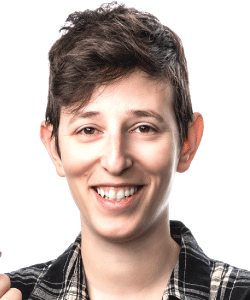
Diana Tamir
My research investigates the thoughts and behaviors that allow people to bridge the self and the social world. I draw from a background in social psychology and cognitive neuroscience to gain insight into why and how the self engages with the social world, and who is particularly well-equipped to do so. First, I have investigated the proximal social rewards that might explain why people are motivated to engage in social behavior. Second, I have investigated two processes that might explain how people represent and predict others’ social behavior: simulation and model-based social cognition. Finally, I have endeavored to understand the limits of simulation and who succeeds at transcending those limits. This work ties together multiple levels of analysis of social cognition—from the basic social rewards that drive people to interact to the cognitive and neural mechanisms that equip us to do so, and to do so successfully.
What was the seminal event, or series of events, that led you to an interest in your award-winning research?
It can be deceptively easy, in hindsight, to connect one’s early experiences to current ones. For example, I remember being a high school student on a college tour at Brown when I learned for the first time that cognitive neuroscience was a field, and feeling awe that one could study how the brain gave rise to the mind. Or, I remember reading a paper about the default mode network as a research assistant and seeing a path open up to studying internal mentation. Or, I remember analyzing a project on self-disclosure in grad school and feeling so thrilled to see my exact predictions come to fruition. In reality, though, the trajectory has not been so direct. Most of what I try fails, and my path has been shaped as much by how I responded to those closed doors as it has been by how I’ve walked through the open ones. Through this wandering, I have established a set of research interests that continues to excite and inspire me as I continue searching for new inroads to understanding.
Tell us about one of the accomplishments you are most proud of within this area of research. What factors led to your success?
The social mind is tailored to the problem of predicting other people. Whether in cooperation or competition, successful social interaction requires people to anticipate others’ future thoughts, feelings, and actions, and prepare their own actions accordingly. Yet despite the importance of social prediction, researchers have only just scratched the surface of the predictive social mind. How do people represent others’ invisible mental states and use them to make predictions? To answer this question, my lab has developed a multilayered framework that helps to explain how people predict others’ future states and behaviors in two steps: First, it suggests that the mind organizes social knowledge using conceptual “maps” of social stimuli. These maps allow people to easily track other people’s current thoughts, feelings, and actions. Second, it suggests that people track distances and trajectories through these maps to make efficient, automatic social predictions. This framework places prediction as the central goal of representing social knowledge. This work would not exist were it not for scientist extraordinaire Mark Thornton. Our collaboration has brought me years of fascinating conversation, boundary-pushing methodological wizardry and friendship.
What contributions, or contributors, to psychological science do you feel have had a major impact on your career path?
The best part of this career is the collaborators, colleagues, advisees, and advisors with whom I get to work. Every conversation in which I throw around ideas with other curious people has been pure joy. I’m so grateful to the other scientists that have helped shape my research interests and career path, including David Dodell-Feder, Hal Hershfield, Meghan Meyer, Jason Mitchell, Nicole Shelton, Stacey Sinclair, Emma Templeton, Mark Thornton, Adam Waytz, Miriam Weaverdyck, and Jamil Zaki. I’ve learned as much from my advisees as I have my advisors and am endlessly grateful to my current lab for being the intellectual community of my dreams.
What questions do you hope to tackle in the future?
In recent years, my lab has thought a lot about how people make predictions about the external world—what others might think, do, or feel, given what they are currently thinking, doing, or feeling. But the external world is not the only world that experiences predictable dynamics and trajectories. In our internal world, our spontaneous thoughts hop from idea to idea within the landscape of thought. Can we model these perches and flights? Can we predict when people will get stuck in thought grooves, or who will be able to escape these grooves to think truly novel thoughts? We’re starting to use insights from computational models of memory to explain how the stream of thought flows, as well as study the implications of these dynamics for creativity and psychopathology.
I’m also super excited about our new research platform, the Person Project (thepersonproject.org), an integrated website and smartphone application that hosts an extensive battery of social and cognitive studies. We are using this platform to conduct reliable, generalizable, and ecologically valid research by recruiting a large sample of diverse participants that we can follow over time and in real time as they go about their everyday lives.
What does winning this award mean to you both personally and professionally?
It’s a tremendous honor to receive this award. The list of past recipients includes some of my absolute favorite psychologists, and I’m humbled to be included among them. Researchers can often spend years out there in the void doing work out of personal curiosity or interest. It’s reassuring to find out that the outside world sees our work as meaningful as well.
Feedback on this article? Email [email protected] or scroll down to comment.




APS regularly opens certain online articles for discussion on our website. Effective February 2021, you must be a logged-in APS member to post comments. By posting a comment, you agree to our Community Guidelines and the display of your profile information, including your name and affiliation. Any opinions, findings, conclusions, or recommendations present in article comments are those of the writers and do not necessarily reflect the views of APS or the article’s author. For more information, please see our Community Guidelines.
Please login with your APS account to comment.